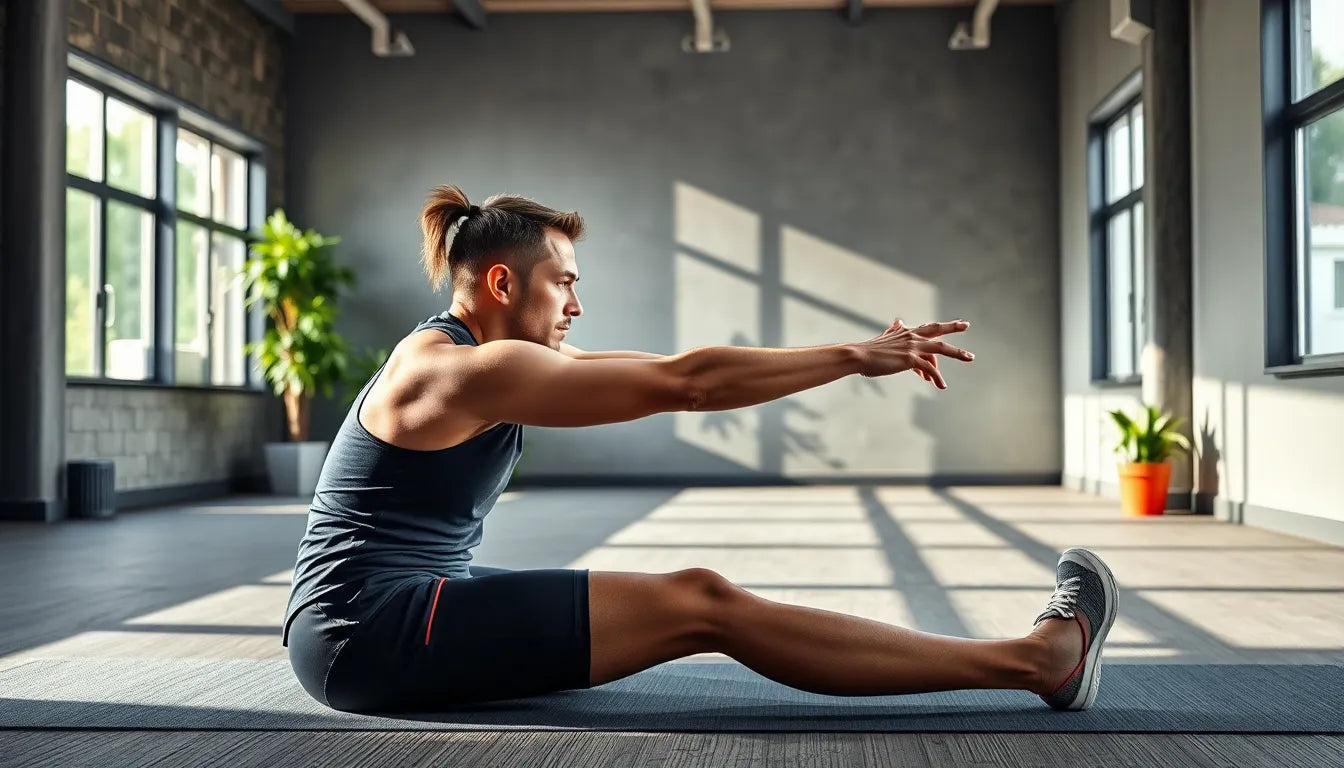Maintaining healthy hips is crucial for overall mobility and balance, playing a vital role in daily activities, from walking and running to standing and sitting. Yet, many people experience issues such as stiffness, pain, and reduced range of motion, often due to sedentary lifestyles. One effective way to combat these problems and enhance hip health is through exercises with resistance bands.
importance of hip mobility and strength
The hips are a central hub of movement in the body, connecting the upper and lower halves and facilitating a wide range of activities. When hip mobility and strength are compromised, it can lead to a cascade of other issues, affecting posture, balance, and even causing pain in other areas such as the back or knees. Regularly incorporating targeted exercises into your routine can help maintain or improve hip function, reducing the risk of injury and enhancing performance in both everyday tasks and athletic endeavors.

Lumbar support belt
Adjustable back belt for lumbar support and pain relief, ideal for daily activities or sitting.
benefits of using resistance bands
Resistance bands are an excellent tool for hip exercises due to their versatility and effectiveness. Unlike weights, bands provide constant tension throughout the movement, which helps in building strength and stability. They are also lightweight and portable, making them ideal for home workouts or while traveling. Resistance bands cater to all fitness levels, as they come in varying strengths, allowing you to start light and gradually increase resistance as your strength improves.
overview of upcoming exercises
In the following sections, we will explore a series of exercises designed to enhance hip strength, flexibility, and balance using resistance bands. These exercises focus on different muscle groups around the hip, ensuring a comprehensive approach to hip health. Whether you're looking to prevent future issues, rehabilitate from an injury, or simply improve your overall fitness, these exercises can be adapted to meet your needs.
By incorporating these resistance band exercises into your routine, you can work towards happier, healthier hips, improving your quality of life and physical capabilities. Stay tuned for detailed instructions and tips to maximize the benefits of your hip workouts.
understanding hip anatomy and safety tips
To effectively perform exercises with resistance bands for the hips, it's essential to have a basic understanding of the hip's anatomy. The hip joint is a complex structure that involves several key muscles, each playing a vital role in movement and stability. The gluteal muscles, including the gluteus maximus, medius, and minimus, are crucial for hip extension, rotation, and abduction. The hip flexors, such as the iliopsoas, are responsible for lifting the leg and flexing the hip. Abductors and adductors, located on the outer and inner thighs respectively, help in moving the leg away from and towards the body's midline. These muscles work in harmony to maintain hip stability, balance, and mobility.
When using resistance bands, safety is paramount. Start by selecting the appropriate band resistance for your fitness level—too much resistance can lead to strain, while too little may not provide enough challenge. Always maintain proper form to prevent injury; this includes keeping your core engaged, back straight, and movements controlled. Avoid common mistakes such as letting the band snap back, which can cause injury, or using momentum rather than muscle strength to perform the exercises.
exercise list with step-by-step guides
exercise 1: liggende hofteøvelse med elastik
Begin by lying on your back with your knees bent and feet flat on the floor. Place the resistance band around your thighs just above the knees. Engage your core and glutes as you lift your hips towards the ceiling until your body forms a straight line from your shoulders to your knees. Hold this position briefly before lowering back down. This exercise targets the gluteal muscles, enhancing hip stability and strength. Perform 3 sets of 10-15 repetitions.
exercise 2: benet fremad og bagud med elastik
Stand tall and anchor the resistance band either in front of or behind your working leg. With a straight or slightly bent knee, move your leg forward and then backward, maintaining a controlled motion. This exercise is particularly beneficial for the hip flexors and hamstrings, making it ideal for individuals who spend a lot of time sitting. Aim for 3 sets of 10-15 repetitions on each leg.
exercise 3: benet ud til siden
Stand with the resistance band secured to one side. Keeping your ankle and toes pointed forward, move your leg sideways away from your body. This movement activates the abductors, the muscles on the outer thigh, which are crucial for lateral stability and balance. Complete 3 sets of 10-15 repetitions per side.
exercise 4: inderside af hoften/adduktorer med elastik
Anchor the resistance band at ankle height. Stand and pull your leg inward, crossing it in front of your standing leg. This exercise strengthens the inner hip and groin muscles, essential for maintaining overall hip balance. Perform 3 sets of 10-15 repetitions for each leg.
additional tips for effective training
Resistance band exercises for the hips are not only effective for building strength but also play a significant role in rehabilitation and prevention. These exercises are often recommended for individuals recovering from hip injuries or surgeries and can help prevent conditions such as osteoarthritis by maintaining joint health and flexibility.

Women's Posture Shirt™ - Black
Patented shirt improves posture, relieves pain, and activates muscles for everyday use or rehab.
As you progress, consider increasing the resistance of your bands to continue challenging your muscles and promoting growth. Variations of these exercises can also be introduced to target different muscle groups or add complexity, such as performing the movements on an unstable surface to engage the core further.
By incorporating these exercises into your routine, you can work towards stronger, more flexible hips, reducing the risk of injury and improving your overall physical performance. Whether you're aiming to enhance athletic capabilities or simply maintain everyday mobility, these exercises offer a practical and effective solution for hip health.
mobility and stretching for hip health
While strengthening exercises are crucial, incorporating mobility and stretching routines into your workout can significantly enhance hip flexibility and prevent injuries. Stretching the hip flexors and abductors helps in maintaining optimal posture and reducing muscle tightness, which is particularly beneficial for those who spend long hours sitting. Simple stretches, such as hip flexor stretches and seated glute stretches, can complement your resistance band exercises, providing a well-rounded approach to hip health.
example stretches to complement resistance training
Consider integrating stretches like the kneeling hip flexor stretch, where you kneel on one knee and push your hips forward gently, and the seated glute stretch, where you cross one leg over the other while seated and lean forward slightly. These stretches should be held for 20-30 seconds each to allow the muscles to relax and lengthen effectively.
balance and stability with resistance bands
Incorporating balance exercises with resistance bands not only strengthens the hips but also enhances proprioception and core stability. Proprioception, the body's ability to sense movement and position, is key for maintaining balance and preventing falls. Exercises that require standing on one leg or using an unstable surface while performing movements with resistance bands can challenge and improve these skills, contributing to overall body control and coordination.
enhancing core engagement
To further engage the core, try exercises like the single-leg deadlift with a resistance band. Stand on one leg with the band under your foot, holding the ends in each hand. Hinge at the hips, keeping your back straight, and lower your torso while extending the other leg behind you. This movement not only works the hip muscles but also requires significant core engagement for stability.
frequently asked questions
how often should I do these exercises?
Ideally, perform these exercises 2-3 times a week, ensuring you allow time for muscle recovery.
can beginners use resistance bands?
Yes, start with light resistance bands and focus on mastering form before progressing to heavier bands.
what if I experience pain during exercises?
Stop immediately if you experience pain and consult a healthcare professional to assess your technique or any underlying issues.
are these exercises suitable for seniors?
Absolutely, with modifications as needed. Seniors should start with lower resistance and possibly consult a physiotherapist for personalized advice.
how can I incorporate these exercises into my routine?
Integrate them into your existing workout or perform them as a standalone routine focused on hip health and mobility.
By following this structured approach, you can effectively use resistance bands to enhance your hip health, ensuring happier, more mobile hips. Whether your goal is rehabilitation, prevention, or simply improving flexibility and strength, these exercises offer a practical solution for maintaining healthy hips.
Kilder
- Elastikshoppen. ”Øvelser med elastik for hoften.”
- Furesø Reumatologerne. ”Træning med elastik for underekstremiteterne.”
- Hospitalsenhed Midt. ”Hofteøvelser for rotatorerne.”
- Gigtforeningen. ”Øvelser for hoften.”
- Hospitalsenhed Midt. ”Hofteøvelser med elastik.”
- YouTube. ”Resistance Band Exercises for Hips.”
- FTO. ”Elastikøvelser for knæ og hofte.”


















